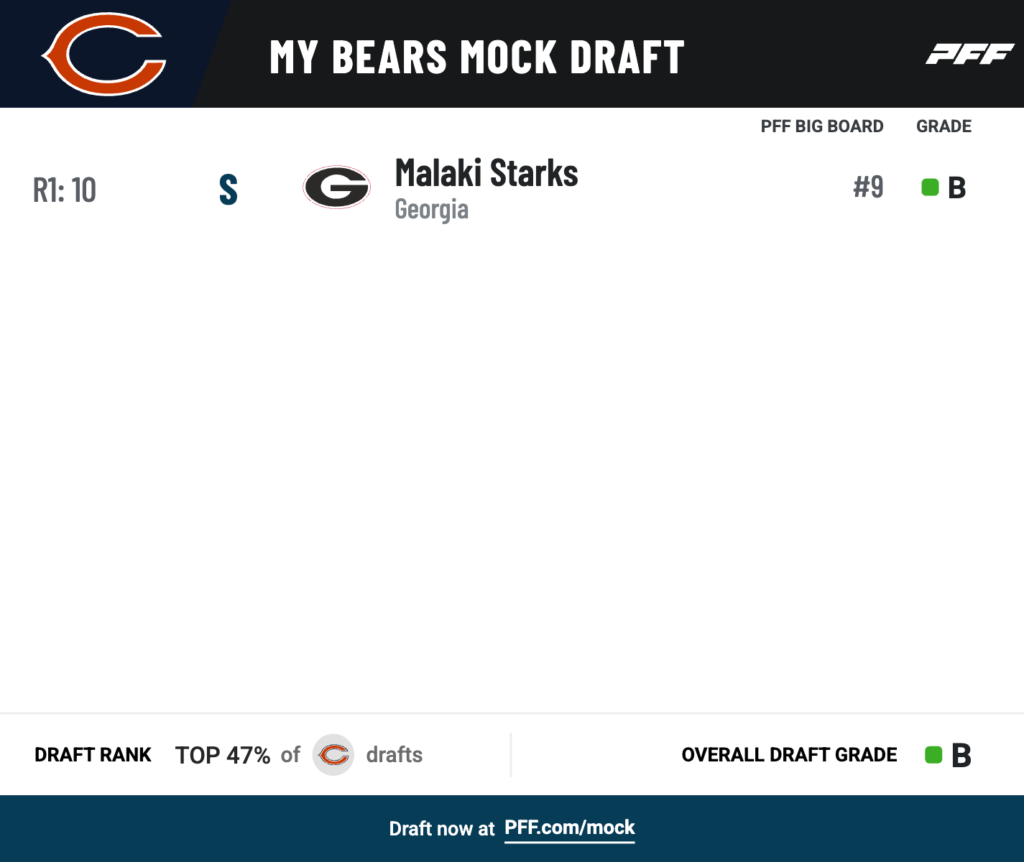2025 NFL Draft: Diving into an underrated safety class filled with NFL starters

2YFXAJH Georgia defensive back Malaki Starks (24) follows a play against Florida during the first half of an NCAA college football game, Saturday, Nov. 2, 2024, in Jacksonville, Fla. (AP Photo/Phelan M. Ebenhack)
By
- Georgia‘s Malaki Starks should still be the class’ top safety: Prospect fatigue seems to be plaguing evaluators with Starks, but he remains a top-20 player on PFF’s big board as one of the class’ best overall defenders.
- Don’t forget about Penn State‘s Kevin Winston Jr.: The second-ranked safety on PFF’s big board earned an 89.2 PFF overall grade as just a true sophomore in 2023 before dealing with an injury-shortened 2024 campaign.
- 2025 NFL Draft season is here: Try PFF’s best-in-class Mock Draft Simulator and learn about 2025’s top prospects while trading and drafting for your favorite NFL team.
Estimated Reading Time: 7 minutes
Click here for more draft tools:
It’s easy to overlook the 2025 NFL Draft’s safety class — or any draft’s safety class, for that matter.
Understanding a safety group takes time; scouting reports require more than just watching highlights to understand what a player does well. There are a lot of “boring” plays where the safety isn’t very involved. But in between that lack of action, you find a safety’s true strengths and weaknesses that can translate to an impactful NFL player.
The 2025 safety class is better than you might think. Here is how I believe it stacks up.

First-Round Worthy
It feels like a hot take nowadays, but I still believe in Malaki Starks as a first-round safety — and even as one of the best defenders in the class.
He was more up-and-down in his PFF coverage grades and catches allowed in 2024 than preferred, specifically from the slot, but his work as a free safety and in space was still special and of an NFL caliber. He might not be as twitchy as you want from a slot defender, but at least he has the playing experience there and isn’t a liability, even if he gives up some separation and catches. That is more than OK, in my opinion, because of how good he is in space on the backend.
When asked to cover deep, he has an excellent feel for when and where to drift to warrant no-throws or make plays on the ball. He is also a very reliable tackler from depth, which is tough to do. His missed tackle percentage was below 10% in each of his three years as a starter.
I won’t get prospect fatigue with Starks. He is a top-20 player on my board.

Day 2 Potential Starters
After Starks, we have some fun prospects with potential Pro Bowl ceilings in the NFL.
The second-ranked safety on my board is Penn State’s Kevin Winston Jr. He was one of the top defensive players on my preseason big board, once again right behind Starks, thanks to tape that earned him an 89.2 PFF overall grade as just a true sophomore in 2023. But he played in just two games this past season due to an ACL injury — and did not grade well in those outings.
Winston is unpolished with some aggressive paths to the ball, and he is late to recognize receiver routes and where the ball is. However, those only make up a handful of reps each game. The rest show great burst, strong tackling and a heightened ability to make plays on the ball from depth.
Andrew Mukuba, Texas
Andrew Mukuba’s 2024 tape is easy to love. He is undersized at 5-foot-11 and 186 pounds (just 14th percentile for weight for the position), but man, can he fly around the field. He is relentless in his pursuit of the ball, giving himself the best chance to make a play. He is not shy when it comes to contact despite his smaller build. His eyes are also NFL-ready at reading the quarterback and anticipating. If you can stomach potential injury concerns with his smaller frame, you’ll love what he brings to the table.

Xavier Watts is one of the more accomplished ball-hawking safeties. His 13 interceptions over the past two seasons were the most in college football, and he was the recipient of the Bronko Nagurski Trophy in 2023, which is awarded to the best defensive player in the country.
The Notre Dame product is a risk-taker in how he approaches coverage and tackling. His routes to the ball are aggressive, and you have to be OK with him freelancing a bit if you want him to have the chance to make those impact plays. A defensive coordinator who can maintain Watt’s confidence to do so will help develop him into an impactful free safety in the NFL.
Splash Players and Role Players
Some might be surprised to see Emmanwori on this list — and not the previous two — after his alien-like NFL Scouting Combine performance where he was an 80th-percentile player or better in height, weight, length, 40-yard dash time, vertical jump, broad jump and bench press. But not all of that size, speed and strength translates in impactful ways for him yet, and he remains a bit of a projection — though one who can make some big plays.
His best work seems to come when he can operate in space, though he does have a tougher time flipping the hips before he can turn on the jets. Emmanwori’s size is impressive, but he shies away from full contact more than you’d like. He is very talented but is not a plug-and-play prospect.

Craig Woodson, California
Speaking of combine standouts, Cal’s Craig Woodson recorded a 4.45-second 40-yard dash and a 10-foot-7 broad jump at a 50th-percentile height and weight for the position. That athleticism shows up on tape, as he earned an 88.6 PFF coverage grade as a deep safety in 2024. It’s tough to find guys who can really play in single-high Cover 1 or Cover 3 assignments, but Woodson can. I like him as an early Day 3 deep safety who could develop into a starter.
Sanker is a heat-seeking missile. There are times when he looks smaller on tape, but that’s simply due to his compact build. In reality, his near-6-foot-1 height and 205-pound weight are well above the 50th percentile for the position. The best part is that he’ll make opponents feel it as someone who loves to hit. He is fast to the ball and comes downhill with bad intentions. He is overaggressive or overpursues the ball on some plays, but you have to live with it if you want him to play free and fast.
Mickens’ father was an All-American at Texas A&M and played for 10 NFL seasons after being selected in the third round of the 1996 draft by the New York Jets. His son now has a similar draft range as an experienced, reliable safety. Mickens’ long arms are helpful in three ways: breaking up passes, hand fighting in man coverage from the slot and tackling reliably. He is so patient and fundamentally sound when it comes to stopping ball carriers. His high-waisted build makes flipping his hips in deep coverage more taxing, but when it comes to downhill work, coaches will love him.
Ransom has positional versatility from the safety spot as a mid-round safety player. He can play in single-high alignments, the slot and the box. He earned an 82.7 PFF overall grade this past season while playing 482 snaps at free safety and 230 in the box. But he does his best work when running downhill. He doesn’t have the best straight-line speed and top gear for deep coverage, but his acceleration and change-of-direction work are pretty smooth. Maybe he doesn’t boast an All-Pro ceiling, but he has starting-caliber potential.




